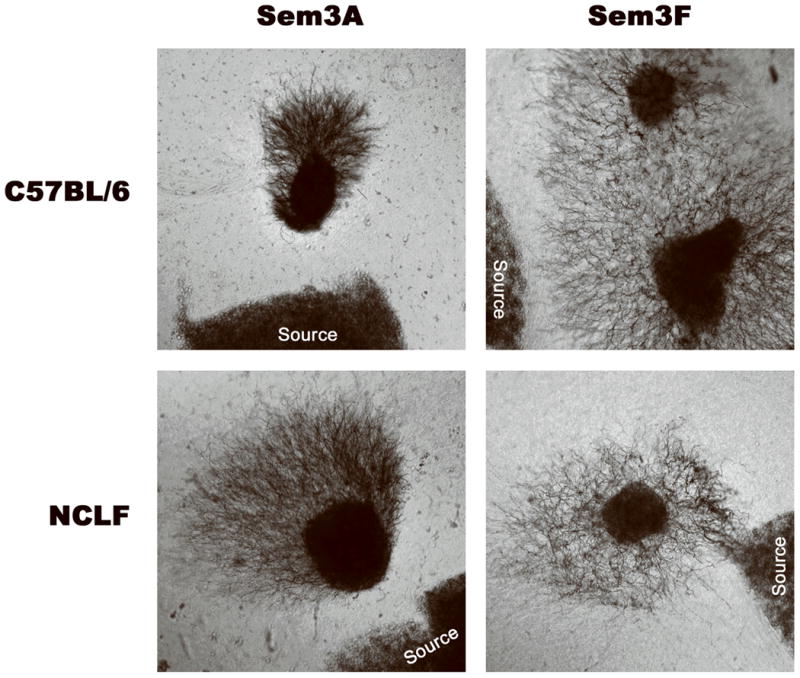Fig. 3.

Repulsion of DRG neurons derived from nclf mice was normal when exposed semaphorin 3A. Dorsal root ganglion (DRG) neurons were removed from either E14.5 C57BL/6 (wild-type) or nclf mice (n = 3). DRGs were cultured adjacent to collagen-embedded HEK293 fibroblasts expressing either semaphorin 3A (Sema3A) or 3F (Sem3F). These fibroblasts then release these factors into the media. After incubation at 37°C for 48 hr, images were obtained looking for repulsion of outgrowth. Sema3A signaling is one of many pathways in which CRMP-2 is downstream. If there is a defect in CRMP-2 signaling through stimulation by Sema3A, no repulsion would be expected. In contrast, Sem3F functions in a CRMP-2 independent pathway, therefore acting as a negative control. We observed no differences in CRMP-2-dependent Sema3A signaling between nclf mouse and wild-type-derived DRGs (magnification 4×).
